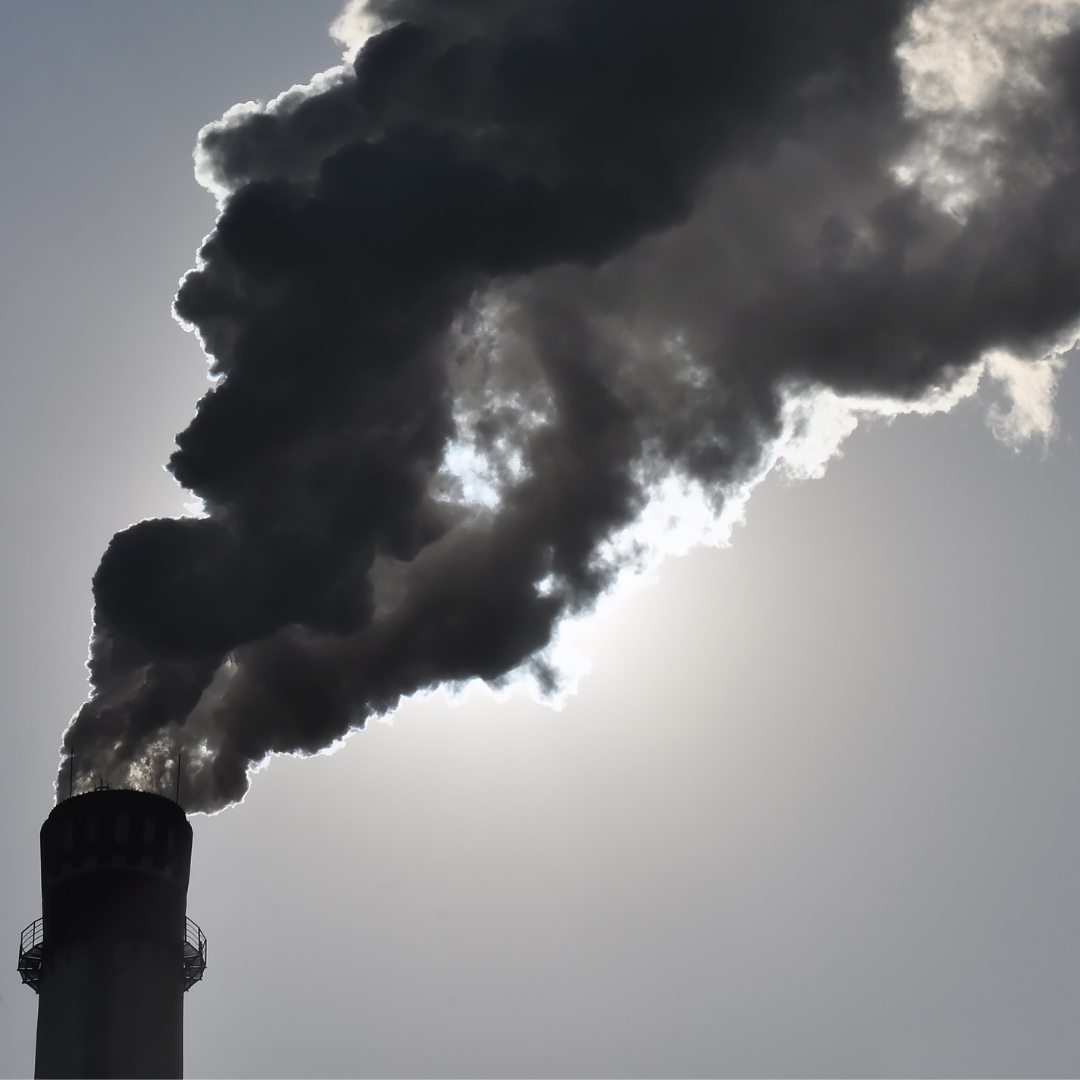WHITEPAPER
Formula for the Future: Addressing Top Challenges with Oilfield Chemicals
TABLE OF CONTENTS
The oil and gas industry is inherently dynamic, constantly evolving with new strategies and technologies that boost the precision, efficiency, and environmental sustainability of its operations. However, the opportunity for change and advancement in the industry has never been greater than today due to the push for renewable energy and federal net-zero emission goals.
Despite the rise in renewable energy resources, overall oil demand is expected to still rise through 2050. To address these future needs, experts and stakeholders at a Society of Petroleum Engineers (SPE) workshop pinpointed the most significant oilfield challenges for the next decade and beyond. Solving these challenges requires a multifaceted approach, including advancements in oilfield chemistry that improve the efficiency and environmental footprint of producing hydrocarbons in shale formations.
As we navigate this transformative period, let’s take a closer look at the challenges forecasted and discuss the innovations, particularly in the oilfield chemistry space, that oil and gas producers can use to best position themselves for success.
"The oil and gas industry faces a rapidly changing world of multiple challenges and opportunities, especially with growing climate and sustainability concerns."
- Society of Petroleum Engineers (SPE)
The enormous proven fossil fuel reserves located in shale and tight resources attract continued attention because of the exploitable shale hydrocarbons available. Tight and shale reservoirs are challenging, and their unique characteristics make extracting hydrocarbons difficult. Combining horizontal drilling and hydraulic fracturing produces great returns in shale formations, but leaves an overwhelming amount of resources in the ground. Even so, shale production is steadily rising, and the U.S. Energy Information Administration reported that domestic shale production hit a new monthly record high of over 13.3 million barrels a day in December 2023. Enhanced oil recovery (EOR) techniques also continue to improve to recover additional oil from depleted reservoirs.
Top shale producers are looking to get more out of each well. Exxon Mobil CEO Darren Woods admits, “There is still a lot of oil being left in the ground,” and adds that the science of fracking is still not completely understood. Exxon, like other operators, is currently working on ways to improve hydraulic fracturing techniques. Specifically, it is learning to improve the fracturing process along the wellbore to reach more reservoir rock and keep lateral fractures open longer thereby improving overall production.
Extracting shale resources creates additional challenges, like possible groundwater contamination, water sourcing and disposal, and induced seismicity. Producers have already begun to address these concerns and are changing practices to mitigate the impacts of shale production. Meanwhile, more research on the composition of shale rock and how best to approach its production is underway to improve shale exploration.
THE PANTHER ADVANTAGE
Panther Fluids Management has experience with different fluid systems in the most active basins in the U.S., including the Permian Basin, Austin Chalk, Eagle Ford, Haynesville, and South Louisiana inland waters. Each basin presents unique drilling challenges, and we have the expertise to manage them all.
Oil and gas operations account for 15% of global energy emissions. Recent focus centers on volatile organic compounds, including methane and BTEX, significantly affecting air quality and human health risks. Some measures for operators to reduce emissions are readily available, cost-effective, and ready to implement. Measures like:
-
Eliminating all emergency flaring
-
Electrifying upstream facilities with low-emission electricity
-
Utilizing carbon capture, utilization, and storage (CCUS) technologies
-
Expanding the use of hydrogen from low-emissions electrolysis in refineries
The spotlight is on methane because of its environmental toxicity and the availability of low-cost measures to reduce it. Recently, the U.S. Environmental Protection Agency announced the 2023 Methane Rule requiring new source performance standards to reduce methane and other VOCs from new and existing upstream and midstream oil and gas operations, including oil and gas wells, well sites, processing plants, storage facilities, and compressor stations.
“We must all focus on reducing emissions and apply a positive can-do vision to drive climate action and get everyone to take action.
”Sultan al-Jaber, COP28 President
Not long after the EPA announcement, approximately 50 international and national oil and gas companies signed net-zero methane pledges, agreeing to significantly reduce methane emissions by 2030 and achieve net-zero carbon emissions by 2050. Even with existing ready-to-implement measures for reaching emissions goals, active implementation requires significant upgrades to existing infrastructure to eliminate these emissions.
The net-zero methane pledge is a significant commitment from the industry, but furthering the development of low-carbon solutions also requires a commitment across the industry. In addition to monitoring strategies like gas imaging cameras, aerial monitoring with aircraft and drones, satellite detection, and fixed sensors, new technology must be developed to meet net-zero goals. Further investment in research, development, and implementation of improved leak detection programs, CCUS systems, and substantial investment and adoption of green technologies will contribute to a more sustainable future.
Carbon capture and storage at scale is a crucial strategy for the decarbonization of oil and gas operations. CCUS can capture more than 90% of the CO2 emitted from industrial operations. Once captured, it can be used or stored deep underground, but challenges exist in the widespread application of CCUS technology. Implementing it is expensive and requires infrastructure buildout for storage sites and transportation.
Tax credits from the Inflation Reduction Act help bring down the costs for the next 12 years, but the high costs of transporting captured carbon vary, making the long-term economics uncertain. Successful carbon storage projects involve collaboration from multiple companies and government approval from federal, state, and local entities. Streamlining the infrastructure to make CCUS efficient also requires streamlining the government approval process.
Geothermal energy is a low-carbon, base-load source of electric power commonly used in California and Indonesia because of their geographical location along the tectonic plate known as the Pacific Ring of Fire. While this type of geothermal energy is limited to proximity, new technologies called enhanced geothermal systems use hydraulic fracturing techniques of the oil and gas industry to create fractures in the rock to access the heat within the rocks and circulate large volumes of fluid, usually water, through the fractures. Heat is transferred to the fluid as it passes through the fracture network. The risks associated with fracking for oil also exist when using fracking technology for geothermal energy, and similar mitigation efforts are needed.
.png?width=1250&height=1250&name=shutterstock_2194510413(2).png)
THE PANTHER BLOG
Explore our blogs to learn more about carbon capture!
> The Path Toward Primacy: Class VI Well Permitting in 2024
> The Race Is On: Carbon Sequestration Projects Gaining Speed
> Carbon Capture Permit Surge: Implications for Oil and Gas
> The Permian Basin’s Role in Carbon Sequestration
Digital technology provides streamlined advances already used in the oil and gas industry—efficiency improvements through sensors, automation, and big data analytics aid drilling and production operations. In addition, refineries and petrochemical plants optimize performance through advanced digital technologies. While the improvement in efficiency and cost-effectiveness of digital technologies is undeniable, adopting and implementing these advancements is complex within the industry’s scale of operations and legacy systems.
In the future, digital transformation will advance existing technologies and add even more to operations. Transformational digital technologies already exist, and many are ready for widespread integration. Digital transformation is possible through technologies such as:
-
Cloud computing gathers and analyzes more information in real time and remains confidential
within a private cloud.
-
Robotics and modern IT automate repetitive tasks, reducing injuries, labor shortages, and costs.
-
Automation of drones assists in inspections by collecting pressure and flow measurements,
reading meters, and alerting safety concerns in real time.
-
Artificial intelligence (AI) and machine learning systems automate business processes, optimize
production and processing, analyze larger seismic data sets, and fill gaps in production from labor
shortages.
-
Operational technology systems support and operate normally unattended facilities.
-1.png?width=1200&length=1200&name=PANTHER_DigiTransImages(1)-1.png)
-1.png?width=1200&length=1200&name=PANTHER_DigiTransImages(2)-1.png)
-1.png?width=1200&length=1200&name=PANTHER_DigiTransImages(3)-1.png)
-1.png?width=1200&length=1200&name=PANTHER_DigiTransImages(4)-1.png)
-1.png?width=1200&length=1200&name=PANTHER_DigiTransImages(5)-1.png)
Commitment to digital transformation is a large-scale process. Adopting digital advancements requires new infrastructure to support it. The challenge in true digital transformation for the oil and gas industry is in the long-term planning, investment, and implementation of digital resources.
As a whole, the industry needs to advocate more to educate society about future energy and the industry’s critical role in global energy security. Public perception of the oil and gas industry has declined over environmental concerns. Unfortunately, the public is not fully aware of the oil and gas industry’s contributions to technology and practices to reduce CO2 emissions. While renewable energy sources are growing in development and use, the need for oil and gas will not disappear.
While the oil and gas industry continually meets the needs of global energy supply and its continued demand, it faces engineering, scientific, and business challenges in meeting the world’s needs. To educate and gain public support, the industry should expand programs that inform society and our leaders about the realities of future energy production. The future of energy production needs more scientists, engineers, and advocacy to encourage enrollment in programs that support energy production.
“Emotional voices driving out sound science-based policy decisions can erode and ultimately destroy the energy-based civilization built over the past century.”
Society of Petroleum Engineers
The industry’s role in the future of global energy security and its challenges is at a critical point. Still, oil and gas industry members must find the best strategy to meet these challenges and their role in the solutions. Advocating for support for pilot projects, research and development strategies, and implementation of new technology with honest science-based information will encourage sound decisions by the industry and policymakers.
Now that industry leaders have predicted the challenges that lie ahead, what can be done to address them? The good news is that solutions are available today for immediate implementation. New and exciting innovations in oilfield chemistry are contributing to success in production improvements without compromising environmental stewardship.

For tight and shale formations, Panther Production Pack’s chemical solutions can greatly improve oil and gas recovery. High-performance chemicals are formulated to overcome production challenges, such as swelling clays, paraffin and asphaltene buildup, and scale production. Equipped with the power of advanced polymer chemistry, it provides industry-leading technology to maximize well productivity and help operators along the path to net-zero operations.
1. IMPROVED RECOVERY FROM TIGHT/SHALE
Enhanced Oil Recovery (EOR):
Oilfield chemical solutions—like those from Panther Production Pack—effectively address challenges such as swelling clays and scale production, increasing the efficiency of extraction processes. These chemicals facilitate longer open fractures and improved reservoir access, directly responding to the industry’s need for enhanced recovery efficiency.

2. NET-ZERO UPSTREAM OPERATIONS
Emissions Reduction:
Breakthrough green technology in oilfield chemistry helps reduce methane and VOC emissions, which is essential for achieving net-zero targets. These improvements align with industry and regulatory commitments to cut specific harmful emissions, furthering environmental protection efforts.

3. LOW-CARBON ENERGY SOURCES
Geothermal and CCUS Support:
Oilfield chemical advancements optimize geothermal systems by refining fracturing fluids, preventing scale, and controlling corrosion, while also improving CCUS operations by boosting CO2 capture efficiency, facilitating its conversion, and providing secure storage. These additions aid the transition to low-carbon energy sources, leveraging oil and gas industry techniques to advance both geothermal and CCUS technologies effectively.
.png?width=1080&name=PANTHER_WhitepaperOilfieldChemicalsImage(3).png)
4. DIGITAL TRANSFORMATION
Enhanced Diagnostics and AI Support:
Improvements in operational efficiency, driven by oilfield chemical advancements, enhance sensor accuracy and diagnostics. These enhancements are important for the integration of more reliable technology, such as automation and AI applications, within the industry.
Infrastructure Optimization for Cloud Computing:
Oilfield chemicals help bolster the reliability of infrastructure critical for cloud computing and digital operations. This strengthening is essential for maintaining operational integrity and efficiency, key for effective technology integration within the industry.

5. EDUCATION AND ADVOCACY
Demonstrating Environmental Stewardship:
Showcasing oilfield chemical innovations that reduce environmental impact and enhance operational efficiency is crucial for aligning with the oil and gas industry’s broader educational goals. These examples help improve public understanding and support for the industry’s environmental initiatives.

Applying the lessons and advances in chemistry for drilling in tight and shale formations successfully develops geothermal systems outside traditional geothermal production near plate boundaries. Using CCUS, advanced chemistry turns the captured carbon into high-value end chemicals, which can increase the value of adding CCUS systems. Much of the digital technology available for oilfield operations uses advanced technology in chemistry to aid thermodynamics models, water chemistry insights, enhanced diagnostics, and alternative treatments.
In summary, these oilfield chemical solutions are at the forefront of addressing the industry’s most pressing challenges, offering:
-
Safer and More Efficient Production: Strengthening recovery techniques and reducing the environmental impact of oil and gas production.
-
Accelerated Low-Carbon Energy Development: Supporting the drilling of geothermal energy wells and improving the viability of CCUS projects, both considered significant to the energy transition.
-
Boosted Energy Security Through Improved Operations: Increasing operational efficiency and reducing costs, thereby bolstering the economic sustainability of oil and gas operations.
Chemistry is involved in almost every solution to the industry’s challenges. The energy transition includes advancements in oil and gas, and education and advocacy efforts must be a priority. Now more than ever, with waning enrollment in programs that support the oil and gas industry, we need advocacy and recruiting to meet future needs.

MEET THE PANTHER PRODUCTION PACK SERIES CHEMICAL ADDITIVES
Our line of Panther Production Pack oilfield chemicals is engineered to deliver powerful, aggressive results, boosting completion and production levels to new heights.

CLAY CONTROL
Effectively treat exposed swelling clays, reducing fines migration and prolonging the integrity of the fracture network.

IRON CONTROL
High-performance iron-control additives compatible with a broad range of pH levels and completion fluid additives.

NON-EMULSIFIER
Efficiently break emulsions in diverse crude oils, featuring innovative, sustainable bio-based surfactants and a 16.5%-49% RCI range.

SURFACTANTS
High-performing bio-based surfactants and deep-penetrating flow aids, prioritizing environmental responsibility and enhanced hydrocarbon recovery.

LUBRICANTS
Dissolve long-chain alkanes, maintain crude oil compatibility, and prevent future build-up in the wellbore.

PARAFFIN & ASPHALTENE CONTROL
Custom-engineered, biopolymer-based lubricants that provide exceptional performance in demanding environments, reducing friction and minimizing wear and tear on your equipment.

SCALE INHIBITORS
Advanced polymer chemistry designed for use in challenging oilfield environments, ensuring optimal performance even in extreme conditions.

Ask about our eco-friendly options crafted with biopolymer-based materials - the perfect solution for those committed to ESG and sustainability initiatives.
In the rapidly evolving landscape of energy production, Panther Fluids plays a pivotal role in leading the oilfield industry toward a sustainable future. Using advanced polymer chemistry, our suite of finely formulated high-performance chemicals optimizes completion and production performance and delivers on the renewable carbon index front.
A sustainable future is available for the oil and gas industry with a collective effort from industry leaders who embrace new technology and innovative chemical solutions in energy production. Panther Fluids is at the forefront, offering not just advanced oilfield chemicals but also comprehensive services, including drilling fluids, solids control, haul-off and disposal, and equipment rentals. We can deliver these individually as standalone offerings or collectively from a single supplier, reducing administrative overhead and boosting operational sustainability.
When faced with oilfield challenges, look to Panther Fluids to provide sustainable solutions with proven results and keep your wellsites running smoothly.
“Annual Energy Outlook 2023,” U.S. Energy Information Administration, March 16, 2023.
“Assessing the challenges ahead for carbon capture in the US,” Wood Mackenzie, Feb. 17, 2023.
“Big deals in US shale may not mean boom times are back,” FT Energy Source, Dec. 12, 2023.
“Carbon Capture,” Center for Climate and Energy Solutions.
“COP28: Fifty oil and gas companies sign net zero, methane pledges,” S&P Global, Dec. 2, 2023.
“Could CCUS make a low-carbon and circular chemical industry a reality?,” Offshore Technology, Sept. 7, 2023.
“Digging deep: Why oil and gas should take a closer look at geothermal,” Utility Drive, July 19, 2023.
“Emissions from Oil and Gas Operations in Net Zero Transitions,” International Energy Agency, May 3, 2023.
“Enhanced Geothermal System Uses Oil And Gas Technology To Mine Low-Carbon Energy. Part 1.,” Forbes, May 19, 2022.
“Grand Challenges Facing the E&P Industry,” Society of Petroleum Engineers.
“Grand Challenges for the Oil and Gas Industry for the Next Decade and Beyond,” Journal of Petroleum Technology, July 1, 2023.
“Improving predictions of shale wettability using advanced machine learning techniques and nature-inspired methods: Implications for carbon capture utilization and storage,” ScienceDirect, June 15, 2023.
“Inflation Reduction Act of 2022,” U.S. Department of Energy.
“Moving upstream with digital technology in the oil and gas industry,” World Oil, August 2023.
“Shale Gas Development Challenges – A Closer Look,” U.S. Department of Energy.
“U.S. Shale Challenges OPEC With Record Production In 2023,” OilPrice.com, July 12, 2023.
“US leads global oil production for sixth straight year- EIA,” Reuters, March 11, 2024.
“US shale productivity fears spur new technology drive,” Argus, Dec. 6, 2023.
“Veolia Water Technologies & Solutions and OLI Systems to Jointly Accelerate Digital Transformation for the Oil and Gas Industry with Water Chemistry Insights,” OLI Systems, Jan. 25, 2023.
“Volatile organic carbon emissions in oil and gas industry: Impact and mitigation,” World Oil, November 2023.
“Why America’s Shale Boom Is Not Over,” Forbes, Aug. 16, 2023.

